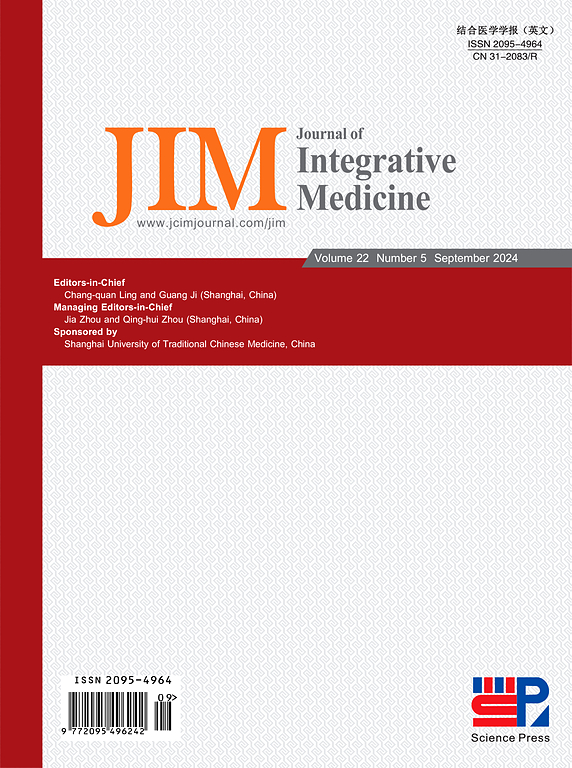医学和护理专业的学生如何看待医疗保健技术?孟加拉可用性评估问卷的心理测量验证研究
IF 4.2
2区 医学
Q1 INTEGRATIVE & COMPLEMENTARY MEDICINE
引用次数: 1
摘要
在各种国际环境中,医疗保健服务的现代化是一个现实。为了确保有效和安全地使用各种形式的医疗保健技术,专业人员和学生必须接受将这些工具纳入他们的实践。目前,孟加拉国没有工具来评估卫生保健学生的技术接受程度。目的:翻译、文化适应和验证孟加拉卫生保健学生可用性评估问卷(UtEQ)。方法:采用方法学方法,分两个阶段进行横断面研究。第一阶段是按照Beaton等人提出的六个阶段,将UtEQ问卷翻译成孟加拉语。在第二阶段,使用来自孟加拉国三所高等教育机构的486名本科保健学生的非概率样本评估问卷的心理测量特性。进行验证性因子分析,并估计Cronbach’s alpha系数以确定内部一致性。结果:各量表维度的内部一致性良好,范围为0.88 ~ 0.92,验证性因子分析显示拟合优度指标充足。结论:UtEQ-B为卫生保健教育工作者和研究人员在孟加拉国临床培训期间评估卫生保健学生的技术接受程度提供了一种可靠有效的方法。本文章由计算机程序翻译,如有差异,请以英文原文为准。
HOW DO MEDICAL AND NURSING STUDENTS VIEW HEALTHCARE TECHNOLOGY? A PSYCHOMETRIC VALIDATION STUDY OF THE USABILITY EVALUATION QUESTIONNAIRE IN BANGLADESH
The modernization of healthcare delivery is a reality in various international settings. To ensure efficient and safe use of the diverse forms of healthcare technology available, professionals and students must be receptive to incorporating such tools into their practice. Currently, there is no instrument in Bangladesh to assess healthcare students’ technology acceptance. Objective: To translate, culturally adapt, and validate the Usability Evaluation Questionnaire (UtEQ) among Bangladeshi healthcare students. Method: A cross-sectional study with a methodological approach was conducted in two phases. The first phase involved the translation of the UtEQ questionnaire to Bengali, following the six stages proposed by Beaton et al. In the second phase, the psychometric properties of the questionnaire were evaluated using a non-probability sample of 486 undergraduate healthcare students from three higher education institutions in Bangladesh. Confirmatory factor analysis was performed, and the Cronbach’s alpha coefficient was estimated to find out the internal consistency. Results: Internal consistency was found to be excellent for all scale dimensions, ranging from 0.88 to 0.92, while confirmatory factor analysis showed adequate goodness-of-fit indicators. Conclusion: The UtEQ-B provides a reliable and valid method for healthcare educators and researchers to assess technology acceptance among healthcare students during clinical training in Bangladesh.
求助全文
通过发布文献求助,成功后即可免费获取论文全文。
去求助
来源期刊

Journal of Integrative Medicine-Jim
Medicine-Complementary and Alternative Medicine
CiteScore
9.20
自引率
4.20%
发文量
3319
期刊介绍:
The predecessor of JIM is the Journal of Chinese Integrative Medicine (Zhong Xi Yi Jie He Xue Bao). With this new, English-language publication, we are committed to make JIM an international platform for publishing high-quality papers on complementary and alternative medicine (CAM) and an open forum in which the different professions and international scholarly communities can exchange views, share research and their clinical experience, discuss CAM education, and confer about issues and problems in our various disciplines and in CAM as a whole in order to promote integrative medicine.
JIM is indexed/abstracted in: MEDLINE/PubMed, ScienceDirect, Emerging Sources Citation Index (ESCI), Scopus, Embase, Chemical Abstracts (CA), CAB Abstracts, EBSCO, WPRIM, JST China, Chinese Science Citation Database (CSCD), and China National Knowledge Infrastructure (CNKI).
JIM Editorial Office uses ThomsonReuters ScholarOne Manuscripts as submitting and review system (submission link: http://mc03.manuscriptcentral.com/jcim-en).
JIM is published bimonthly. Manuscripts submitted to JIM should be written in English. Article types include but are not limited to randomized controlled and pragmatic trials, translational and patient-centered effectiveness outcome studies, case series and reports, clinical trial protocols, preclinical and basic science studies, systematic reviews and meta-analyses, papers on methodology and CAM history or education, conference proceedings, editorials, commentaries, short communications, book reviews, and letters to the editor.
Our purpose is to publish a prestigious international journal for studies in integrative medicine. To achieve this aim, we seek to publish high-quality papers on any aspects of integrative medicine, such as acupuncture and traditional Chinese medicine, Ayurveda medicine, herbal medicine, homeopathy, nutrition, chiropractic, mind-body medicine, taichi, qigong, meditation, and any other modalities of CAM; our commitment to international scope ensures that research and progress from all regions of the world are widely covered. These ensure that articles published in JIM have the maximum exposure to the international scholarly community.
JIM can help its authors let their papers reach the widest possible range of readers, and let all those who share an interest in their research field be concerned with their study.
 求助内容:
求助内容: 应助结果提醒方式:
应助结果提醒方式:


